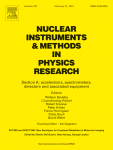-

Advanced Characterization of a Hybrid Shielding Solution for Reducing Electromagnetic Interferences at Board Level
Victoria, J; Suarez, A; Martinez, P.A.; Amaro, A; Alcarria, A.; Torres, J.; Herraiz, R.; Solera, V.; Martinez, V.; Garcia-Olcina, R.
(2024). ArticleElectronics. Num.13(3)
The development of new advanced functionalities, miniaturization, and the aim of obtaining optimized performance in electronic devices significantly impacts their electromagnetic compatibility (EMC). As electronic components become more densely packed on a printed circuit board (PCB), unintended coupling between components can cause electromagnetic interference (EMI). These requirements result in design restrictions that make using a board level shield (BLS) essential in reducing intra-system EMI in PCB designs. This contribution focuses on studying and characterizing a BLS solution based on combining a noise suppression sheet (NSS) with an aluminum layer to reduce intra-system EMI...
The development of new advanced functionalities, miniaturization, and the aim of obtaining optimized performance in electronic devices significantly impacts their electromagnetic compatibility (EMC). As electronic components become more densely packed on a printed circuit board (PCB), unintended coupling between components can cause electromagnetic interference (EMI). These requirements result in design restrictions that make using a board level shield (BLS) essential in reducing intra-system EMI in PCB designs. This contribution focuses on studying and characterizing a BLS solution based on combining a noise suppression sheet (NSS) with an aluminum layer to reduce intra-system EMI coupling. This hybrid solution has the advantage of providing a shielding option that does not require any electronic redesign. It does not need a footprint or a ground connection as it can be affixed over the EMI source. The solution is expected to provide higher attenuation levels than using only an NSS by combining the absorbing properties of the magnetic material and the loss mechanism of the metal. In order to verify the effectiveness of the hybrid BLS proposed solution, the magnetic near-field emissions of an EMI source are analyzed in this study. The experimental measurements and simulated results demonstrate a significant increase (51.6 dB at 1 GHz) in the shielding effectiveness (SE) provided by the proposed solution compared to a conventional NSS.
Llegir més Ocultar DOI: 10.3390/electronics13030598ISSN: 2079-9292 -

The TileCal PreProcessor interface with the ATLAS global data acquisition system at the HL-LHC
Cervelló, A.; Carrió, F.; García, R.; Martos, J.; Soret, J.; Torres, J.; Valero, A.;
(2022). ArticleNuclear Inst. and Methods in Physics Research, A. Num.1043
The Large Hadron Collider (LHC) has envisaged a series of upgrades towards a High Luminosity LHC (HL-LHC) delivering five times the LHC nominal instantaneous luminosity. It will take place throughout 2026–2028, corresponding to the Long Shutdown 3. During this upgrade, the ATLAS Tile Hadronic Calorimeter (TileCal) will replace completely on- and off-detector electronics adopting a new read-out architecture. Signals captured from TileCal are digitized by the on-detector electronics and transmitted to the TileCal PreProcessor (TilePPr) located off-detector, which provides the interface with the ATLAS trigger and data acquisition systems. TilePPr receives, process and transmits the data...
The Large Hadron Collider (LHC) has envisaged a series of upgrades towards a High Luminosity LHC (HL-LHC) delivering five times the LHC nominal instantaneous luminosity. It will take place throughout 2026–2028, corresponding to the Long Shutdown 3. During this upgrade, the ATLAS Tile Hadronic Calorimeter (TileCal) will replace completely on- and off-detector electronics adopting a new read-out architecture. Signals captured from TileCal are digitized by the on-detector electronics and transmitted to the TileCal PreProcessor (TilePPr) located off-detector, which provides the interface with the ATLAS trigger and data acquisition systems. TilePPr receives, process and transmits the data from the on-detector system and transmits it to the Front-End Link eXchange (FELIX) system. FELIX is the ATLAS common hardware in all the subdetectors designed to act as a data router, receiving and forwarding data to the SoftWare Read-Out Driver (SWROD) computers. FELIX also distributes the Timing, Trigger and Control (TTC) signals to the TilePPr to be propagated to the on-detector electronics. The SWROD is an ATLAS common software solution to perform detector specific data processing, including configuration, calibration, control and monitoring of the partition In this contribution we will introduce the new read-out elements for TileCal at the HL-LHC, the interconnection between the off-detector electronics and the FELIX system, the configuration and implementation for the test beam campaigns, as well as future developments of the preprocessing and monitoring status of the calorimeter modules through the SWROD infrastructure.
Llegir més Ocultar DOI: 10.1016/j.nima.2022.167492ISSN: 0168-9002 -

RF Acquisition System Based on μTCA for Testing of High-Gradient Acceleration Cavities
Menéndez, A.; Esperante, D.; García-Olcina, R.; Torres, J.; Pérez-Soler, J.; Marco, R.; Gimeno, B.; Martos, J.; Soret, J.
(2022). ArticleElectronics. Num.11(5)
The radio frequency (RF) laboratory hosted in the Corpuscular Physics Institute (IFIC) of the University of Valencia is designed to house a high-power and high-repetition-rate facility to test normal conduction RF accelerator cavities in the S-Band (2.9985 GHz) in order to perform R&D activities related to particle accelerator cavities. The system, which manages the entire process of RF signal generation, data acquisition and closed-loop control of the laboratory, is currently based on a modular and compact PXI platform system. This contribution details the development of a platform with similar features, but which is based on open architecture standards at both the hardware and software...
The radio frequency (RF) laboratory hosted in the Corpuscular Physics Institute (IFIC) of the University of Valencia is designed to house a high-power and high-repetition-rate facility to test normal conduction RF accelerator cavities in the S-Band (2.9985 GHz) in order to perform R&D activities related to particle accelerator cavities. The system, which manages the entire process of RF signal generation, data acquisition and closed-loop control of the laboratory, is currently based on a modular and compact PXI platform system. This contribution details the development of a platform with similar features, but which is based on open architecture standards at both the hardware and software level. For this purpose, a complete system based on the μTCA platform has been developed. This new system must be able to work with accelerator cavities at other operating frequencies, such as 750 MHz, as well as to explore different options at firmware and software levels based on open-source codes.
Llegir més Ocultar DOI: 10.3390/electronics11050720ISSN: 2079-9292 -

Novel nanocrystalline cores for EMI suppression in cables: characterization methodology and performance study
Adrián Suárez Zapata, José Torres País (Director)
(2021). TesiThe ideal procedure to start designing an electronic device is to consider the Electromagnetic Compatibility (EMC) from the beginning. Even so, EMC problems can appear afterward, especially when the designed system is interconnected to external devices. Thereby, Electromagnetic Interferences (EMI) could be transmitted to our device from power cables that interconnect it with an external power source or when it is connected to another system to establish a wired communication. When the cables represent the EMI source, which implies failing the conducted or radiated emissions test, a widely used technique is applying an EMI suppressor such as a sleeve core. The integration of this kind of...
The ideal procedure to start designing an electronic device is to consider the Electromagnetic Compatibility (EMC) from the beginning. Even so, EMC problems can appear afterward, especially when the designed system is interconnected to external devices. Thereby, Electromagnetic Interferences (EMI) could be transmitted to our device from power cables that interconnect it with an external power source or when it is connected to another system to establish a wired communication. When the cables represent the EMI source, which implies failing the conducted or radiated emissions test, a widely used technique is applying an EMI suppressor such as a sleeve core. The integration of this kind of component can involve an extra cost in terms of the production of the system. Nevertheless, this situation are usually compensated by the effectiveness of sleeve cores to filter interferences without having to redesign the electronic circuit. This is one of the main reasons designers extensively use this EMI suppression solution to meet EMC compliance requirements. The most used EMI suppressors cores for filtering applications are based on ceramic materials (also known as polycrystalline materials or soft ferrites). One of the conventional ceramic materials most used is MnZn that is intended to reduce EMI in the frequency range from the higher Kilohertz to the very low Megahertz region. Other widely used core materials are those based on NiZn compositions since they work in a broadband frequency range. Nevertheless, conventional materials used to manufacture sleeve core EMI suppressors are focused on reducing disturbances in cables in a specific frequency region. Consequently, new materials that can provide a more significant EMI suppression had to be studied to ensure electromagnetic compatibility in those frequency regions not specifically covered by traditional solutions. The results obtained by other EMC components, such as the common-mode-chokes based on nanocrystalline compositions, have shown significant effectiveness in terms of insertion loss in a wide frequency range because of their high initial permeability. From the preliminary results and features offered by the nanocrystalline material, this Ph.D. study focuses on carrying out a thorough characterization of the performance of sleeve EMI suppressor components based on nanocrystalline material. Thereby, the overall aim of the present doctoral thesis is studying, analyzing and evaluating the nanocrystalline material suitability to manufacture sleeve core EMI suppressor to reduce the interferences in cables as an alternative to conventional ceramic materials, traditionally used to produce EMC components. This research is carried out by designing and implementing a measurement setup method that makes it possible to determine the insertion loss parameter provided by a specific sleeve core when applied to a cable that interconnects two systems with a specific impedance. These results are correlated with a finite element method (FEM) simulation model that makes it possible to evaluate the accuracy of the experimental data and evaluate different sleeve core samples by introducing their magnetic properties and dimensional parameters. Finally, samples with different sizes are analyzed with the aim of determining the dependency between performance and component volume. The increase of the dimensions is usually proportional to its weight, volume and cost, thus a balance between these three features and performance should be carried out. The goal is to obtain a parameter that relates these features in order to determine the optimized dimensions of a sleeve core that can provide the effectiveness necessary to reduce a specific level of EMI in a cable.
Llegir més OcultarCalificación: Sobresaliente Cum Laude
-

Performance Study of Split Ferrite Cores Designed for EMI Suppression on Cables
Suarez, A.; Victoria, J.; Torres, J.; Martinez, P.A.; Alcarria, A.; Perez, J.; Garcia-Olcina, R.; Soret, J.; Muetsch, S.; Gerfer
(2020). ArticleElectronics. Num.9(12)
The ideal procedure to start designing an electronic device is to consider the electromagnetic compatibility (EMC) from the beginning. Even so, EMC problems can appear afterward, especially when the designed system is interconnected with external devices. Thereby, electromagnetic interferences (EMIs) could be transmitted to our device from power cables that interconnect it with an external power source or are connected to another system to establish wired communication. The application of an EMI suppressor such as a sleeve core that encircles the cables is a widely used technique to attenuate EM disturbances. This contribution is focused on the characterization of a variation of this cable...
The ideal procedure to start designing an electronic device is to consider the electromagnetic compatibility (EMC) from the beginning. Even so, EMC problems can appear afterward, especially when the designed system is interconnected with external devices. Thereby, electromagnetic interferences (EMIs) could be transmitted to our device from power cables that interconnect it with an external power source or are connected to another system to establish wired communication. The application of an EMI suppressor such as a sleeve core that encircles the cables is a widely used technique to attenuate EM disturbances. This contribution is focused on the characterization of a variation of this cable filtering solution based on openable core clamp or snap ferrites. This component is manufactured by two split parts pressed together by a snap-on mechanism which turns this into a quick, easy to install solution for reducing post-cable assembly EMI problems. The performance of three different materials, including two polycrystalline (MnZn and NiZn) materials and nanocrystalline (NC) solution, are analyzed in terms of effectiveness when the solid sleeve cores are split. The possibility of splitting an NC core implies an innovative technique due to the brittleness of this material. Thus, the results obtained from this research make it possible to evaluate this sample’s effectiveness compared to the polycrystalline ones. This characterization is carried out by the introduction of different gaps between the different split-cores and analyzing their behavior in terms of relative permeability and impedance. The results obtained experimentally are corroborated with the results obtained by a finite element method (FEM) simulation model with the aim of determining the performance of each material when it is used as an openable core clamp.
Llegir més Ocultar DOI: 10.3390/electronics9121992ISSN: 2079-9292 -

Effectiveness Assessment of a Nanocrystalline Sleeve Ferrite Core Compared with Ceramic Cores for Reducing Conducted EMI
Suarez, A.; Victoria, J.; Torres, J.; Martinez, P.A.; Alcarria, A.; Martos, J.; Garcia-Olcina, R.; Soret, J.; Muetsch, S.; Gerfer, A.
(2020). ArticleElectronics. Num.8(7)
The interconnection of different electronic devices or systems through cables is becoming more difficult due to the hard restrictions related to electromagnetic compatibility (EMC) in order to comply with requirements. Therefore, the use of EMC components is a good solution to manage the problems associated with the filtering of electromagnetic interference (EMI) in cables and to pass the compliance test. In this sense, sleeve ferrite cores become a very interesting solution since they can be set around a wire and, hence, they provide an effective solution against EMI without having to redesign the electronic circuit. This contribution is focused on the characterization of the performance...
The interconnection of different electronic devices or systems through cables is becoming more difficult due to the hard restrictions related to electromagnetic compatibility (EMC) in order to comply with requirements. Therefore, the use of EMC components is a good solution to manage the problems associated with the filtering of electromagnetic interference (EMI) in cables and to pass the compliance test. In this sense, sleeve ferrite cores become a very interesting solution since they can be set around a wire and, hence, they provide an effective solution against EMI without having to redesign the electronic circuit. This contribution is focused on the characterization of the performance of a sleeve ferrite core based on a novel nanocrystalline (NC) novel material for EMI suppression and comparing it to the most conventional ceramic ferrite cores such as MnZn and NiZn. The research highlights the suitability of an NC novel component in terms of its magnetic properties to reduce EMI within the conducted emissions range. This range is generally defined by the International Special Committee on Radio Interference (CISPR) test standards frequency band that covers from 150 kHz up to 30 MHz (108 MHz in the case of CISPR 25). First, this study presents a description of the main parameters that define the behavior of NC and ceramic cores and, secondly, by analyzing the data obtained from experimental procedures, it is possible to directly determine the insertion loss parameter. Hence, this characterization procedure is used to obtain the performance of NC material compared to the conventional sleeve ferrite core compositions employed to filter the interferences in this problematic frequency range. As can be deduced from the results obtained, an NC sleeve ferrite core provides the best performance in terms of EMI filtering within a significant frequency range between 100 kHz and 100 MHz.
Llegir més Ocultar DOI: 10.3390/electronics8070800ISSN: 2079-9292 -

Transmission Attenuation Power Ratio Analysis of Flexible Electromagnetic Absorber Sheets Combined with a Metal Layer
Victoria, J.; Suarez, A.; Torres, J.; Martinez, P.A.; Alcarria, A.; Martos, J.; Garcia-Olcina, R.; Soret, J.; Muetsch, S.; Gerfer, A.
(2018). ArticleMaterials. Num.11(9)
Electromagnetic noise absorber sheets have become a solution for solving complex electromagnetic interference (EMI) problems due to their high magnetic losses. This contribution is focused on characterizing a novel structure that is based on an absorber film with a metal layer attached on its top side. Two different absorber compositions were combined with Al and Cu metal layers in order to study the improvement on the performance of these structures, depending on the complex permeability, absorber film thickness, and type of metal. The transmission attenuation power ratio of the absorber films is analyzed and compared to the performance of absorber and metal structures. The measurement...
Electromagnetic noise absorber sheets have become a solution for solving complex electromagnetic interference (EMI) problems due to their high magnetic losses. This contribution is focused on characterizing a novel structure that is based on an absorber film with a metal layer attached on its top side. Two different absorber compositions were combined with Al and Cu metal layers in order to study the improvement on the performance of these structures, depending on the complex permeability, absorber film thickness, and type of metal. The transmission attenuation power ratio of the absorber films is analyzed and compared to the performance of absorber and metal structures. The measurement procedure is carried out attaching the films into a microstrip line that has been designed based on IEC standard (IEC 62333-2). This test fixture is employed as a transmission line to simulate a general noise path. The performance of absorber composites to filter electromagnetic noise is evaluated through analyzing S21 and S11 parameters. This is carried out with the aim of finding out in which conditions the absorption loss is improved when a metal layer is attached. In addition, the possible re-radiation effect, due to the magnetic field that is generated by the eddy currents induced in the metal layer, is examined.
Llegir més Ocultar DOI: 10.3390/ma11091612ISSN: 1996-1944 -

Transmission Attenuation Power Ratio Analysis of Flexible Electromagnetic Absorber Sheets Combined with a Metal Layer
Victoria, J.; Suarez, A.; Torres, J.; Martinez, P.A.; Alcarria, A.; Martos, J.; Garcia-Olcina, R.; Soret, J.; Muetsch, S.; Gerfer, A.
(2018). ArticleMaterials. Num.11(9)
Electromagnetic noise absorber sheets have become a solution for solving complex electromagnetic interference (EMI) problems due to their high magnetic losses. This contribution is focused on characterizing a novel structure that is based on an absorber film with a metal layer attached on its top side. Two different absorber compositions were combined with Al and Cu metal layers in order to study the improvement on the performance of these structures, depending on the complex permeability, absorber film thickness, and type of metal. The transmission attenuation power ratio of the absorber films is analyzed and compared to the performance of absorber and metal structures. The measurement...
Electromagnetic noise absorber sheets have become a solution for solving complex electromagnetic interference (EMI) problems due to their high magnetic losses. This contribution is focused on characterizing a novel structure that is based on an absorber film with a metal layer attached on its top side. Two different absorber compositions were combined with Al and Cu metal layers in order to study the improvement on the performance of these structures, depending on the complex permeability, absorber film thickness, and type of metal. The transmission attenuation power ratio of the absorber films is analyzed and compared to the performance of absorber and metal structures. The measurement procedure is carried out attaching the films into a microstrip line that has been designed based on IEC standard (IEC 62333-2). This test fixture is employed as a transmission line to simulate a general noise path. The performance of absorber composites to filter electromagnetic noise is evaluated through analyzing S21 and S11 parameters. This is carried out with the aim of finding out in which conditions the absorption loss is improved when a metal layer is attached. In addition, the possible re-radiation effect, due to the magnetic field that is generated by the eddy currents induced in the metal layer, is examined.
Llegir més Ocultar DOI: 10.3390/ma11091612ISSN: 1996-1944 -

Detector block based on arrays of 144 SiPMs and monolithic scintillators: A performance study
A.J. González, P. Conde, A. Iborra, A. Aguilar, P. Bellido, R. García-Olcina, L. Hernández, L. Moliner, J.P. Rigla, M.J. Rodríguez-Álvarez, F. Sánchez, M. Seimetz, A. Soriano, J. Torres, L.F. Vidal, J.M. Benlloch
(2015). ArticleNuclear Inst. and Methods in Physics Research, A.. Num.787
We have developed a detector block composed by a monolithic LYSO scintillator coupled to a custom made 12×12 SiPMs array. The design is mainly focused to applications such as Positron Emission Tomography. The readout electronics is based on 3 identical and scalable Application Specific Integrated Circuits (ASIC). We have determined the main performance of the detector block namely spatial, energy, and time resolution but also the system capability to determine the photon depth of interaction, for different crystal surface treatments. Intrinsic detector spatial resolution values as good as 1.7 mm FWHM and energies of 15% for black painted crystals were measured.
DOI: 10.1016/j.nima.2014.10.078ISSN: 0168-9002 -

Timing Results Using an FPGA-Based TDC with Large Arrays of 144 SiPMs
A. Aguilar, A. J. González, J. Torres, R. García-Olcina, J. Martos, J. Soret, P. Conde, L. Hernández, F. Sánchez, J. M. Benlloch
(2014). ArticleIEEE Transactions on Nuclear Science. Num.62(1)
Silicon photomultipliers (SiPMs) have become an alternative to traditional tubes due to several features. However, their implementation to form large arrays is still a challenge especially due to their relatively high intrinsic noise, depending on the chosen readout. In this contribution, two modules composed of 12 ×12 SiPMs with an area of roughly 50 mm×50 mm are used in coincidence. Coincidence resolving time (CRT) results with a field-programmable gate array, in combination with a time to digital converter, are shown as a function of both the sensor bias voltage and the digitizer threshold. The dependence of the CRT on the sensor matrix temperature, the amount of SiPM active area and the...
Silicon photomultipliers (SiPMs) have become an alternative to traditional tubes due to several features. However, their implementation to form large arrays is still a challenge especially due to their relatively high intrinsic noise, depending on the chosen readout. In this contribution, two modules composed of 12 ×12 SiPMs with an area of roughly 50 mm×50 mm are used in coincidence. Coincidence resolving time (CRT) results with a field-programmable gate array, in combination with a time to digital converter, are shown as a function of both the sensor bias voltage and the digitizer threshold. The dependence of the CRT on the sensor matrix temperature, the amount of SiPM active area and the crystal type is also analyzed. Measurements carried out with a crystal array of 2 mm pixel size and 10 mm height have shown time resolutions for the entire 288 SiPM two-detector set-up as good as 800 ps full width at half maximum (FWHM).
Llegir més Ocultar DOI: 10.1109/TNS.2014.2359078ISSN: 0018-9499





